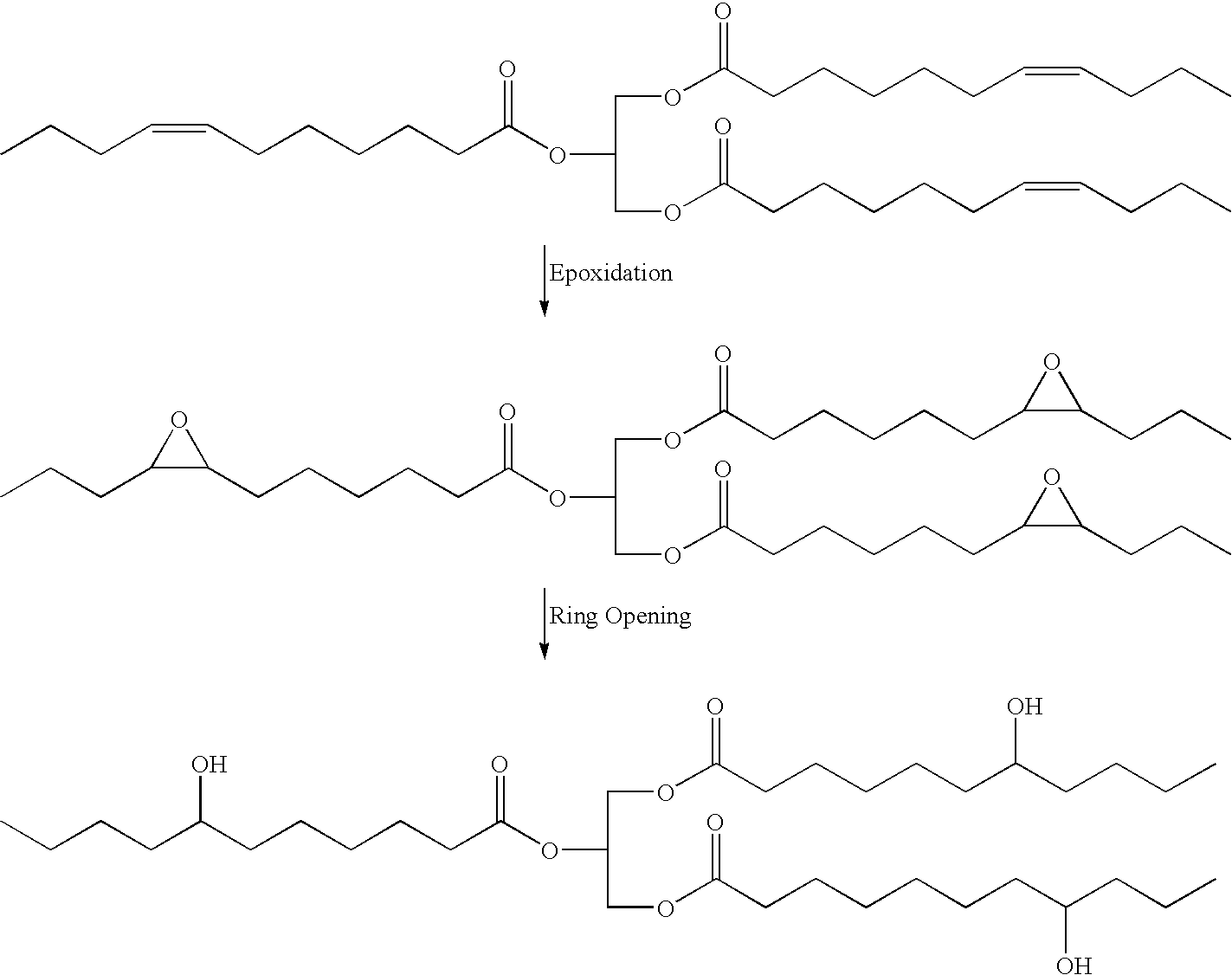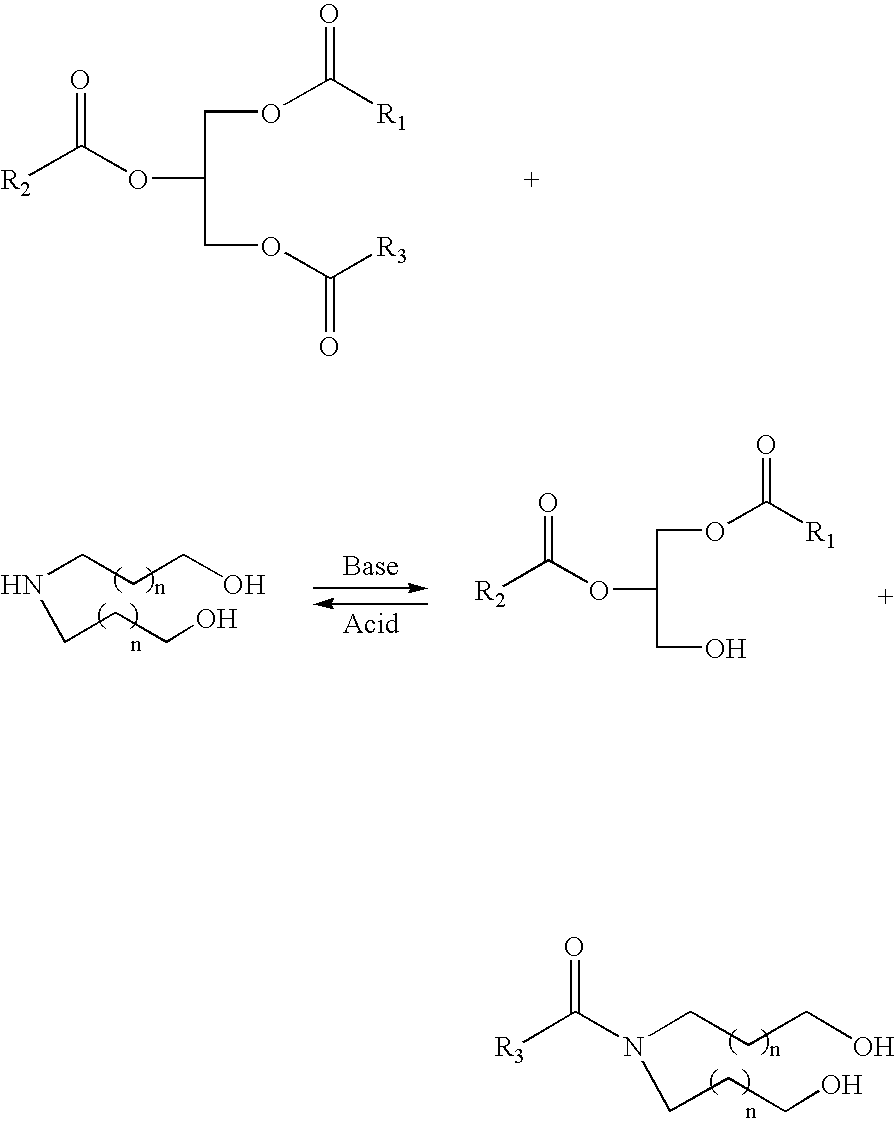Polyols from plant oils and methods of conversion
- Summary
- Abstract
- Description
- Claims
- Application Information
AI Technical Summary
Benefits of technology
Problems solved by technology
Method used
Image
Examples
example 1
[0032]
ComponentAmount (grams)Soybean oil309.60Iodine0.60Diethanolamine58.11Diphenylmethane diisocyanate13.00
The above amounts of diethanolamine and iodine were added to the above amount of soybean oil with stirring. The mixture was stirred for 18 hours at between about 195° F. (90° C.) and about 236° F. (113° C.), then cooled to room temperature to give about 368.31 grams clear liquid soy-polyol with a hydroxyl number of 182 and a viscosity of 364 cps. An amount of 30.82 grams of the polyol was then reacted with the above disclosed amount of diphenylmethane diisocyanate, yielding a solid soy polyurethane material.
example 2
[0033]
ComponentAmount (grams)Soybean oil309.60Iodine0.60Diethanolamine58.11Diphenylmethane diisocyanate13.00
The above amounts of diethanolamine and iodine were added to the above amount of soybean oil with stirring. The mixture was stirred for 40 hours between about 175° F. (79° C.) and about 205° F. (96° C.), then cooled to room temperature to give 368.31 grams of clear liquid soy polyol with a hydroxyl number of 179 and a viscosity of 360 cps. A reaction mixture of about 30.82 grams of the soy polyol with the above amount of diphenylmethane diisocyanate yielded a solid soy polyurethane material.
example 3
[0034]
ComponentAmount (grams)Soybean oil309.60Iodine crystal0.60Diethanolamine58.11Diphenylmethane diisocyanate13.00
The above-identified amount of iodine was added to the above amount of soybean oil with stirring at room temperature. The mixture was then stirred below about 120° F. (48° C.). After the iodine color disappeared the above amount of diethanolamine was added to the mixture. The mixture was stirred for 40 hours at between about 175° F. (79° C.) and about 205° F. (96° C.), then cooled to room temperature to give 368.31 grams clear liquid soy polyol with a hydroxyl number of 178 and a viscosity of 362 cps. A reaction mixture of about 30.82 grams of the polyol and 13.00 grams diphenylmethane diisocyanate yielded a solid soy polyurethane material.
PUM
| Property | Measurement | Unit |
|---|---|---|
| Temperature | aaaaa | aaaaa |
| Temperature | aaaaa | aaaaa |
| Volume | aaaaa | aaaaa |
Abstract
Description
Claims
Application Information
 Login to View More
Login to View More - R&D
- Intellectual Property
- Life Sciences
- Materials
- Tech Scout
- Unparalleled Data Quality
- Higher Quality Content
- 60% Fewer Hallucinations
Browse by: Latest US Patents, China's latest patents, Technical Efficacy Thesaurus, Application Domain, Technology Topic, Popular Technical Reports.
© 2025 PatSnap. All rights reserved.Legal|Privacy policy|Modern Slavery Act Transparency Statement|Sitemap|About US| Contact US: help@patsnap.com



